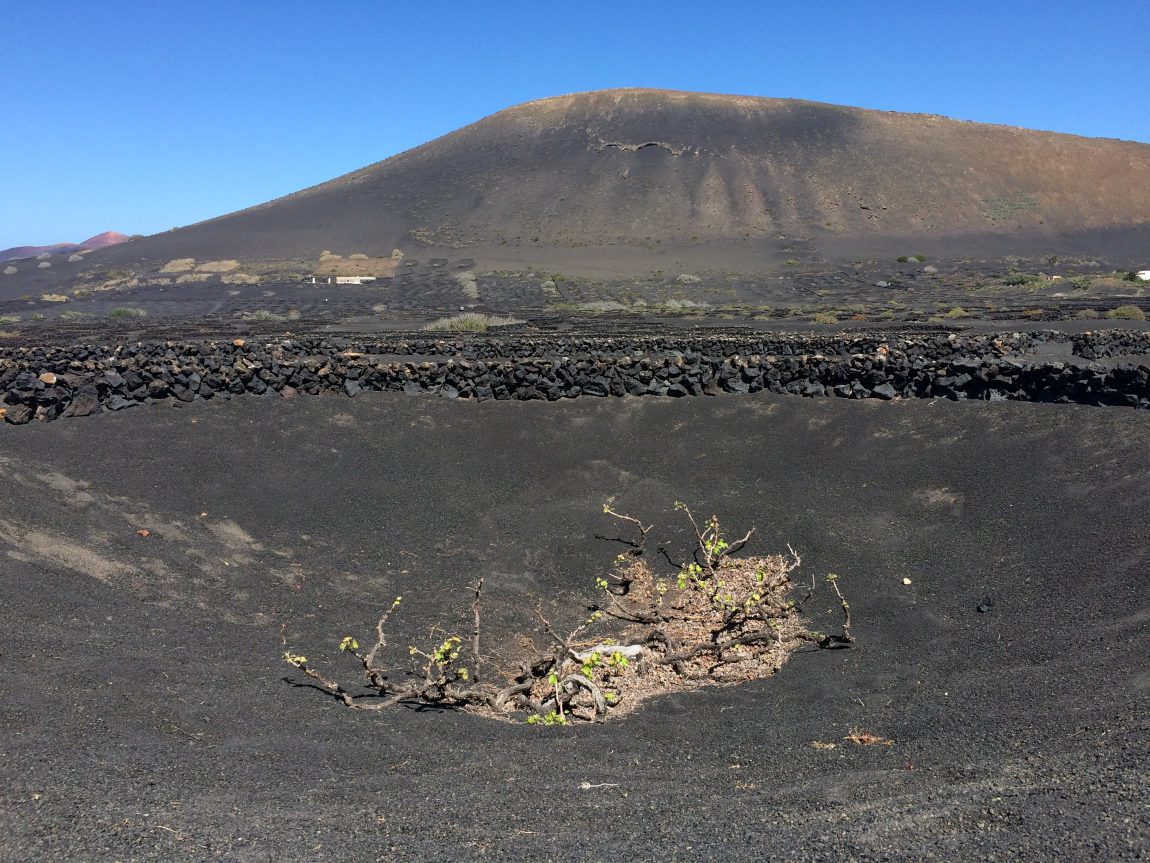The first-ever wine press event I attended was a Canary Islands tasting. I was on a two-week work experience stint and was pea green. The editor of Harpers thought he’d sent me to a Spanish tasting – well I suppose it was; I turn up and there’s a load of winemakers from Tenerife and Lanzarote. No Rioja or Priorat in sight. There wasn’t much to report but I was determined to find a story. Sadly, I then proceeded to leave my notepad at the tasting and had to get a taxi back to the event before turning up rather late at the office. They still gave me a job at the end of the fortnight.
I haven’t tasted any Canary Islands’ wines since – I guess New Zealand isn’t a key market for them. However, within weeks of my return to England I was stunned by Suertes del Marques’s wines from Tenerife. Who knew? Well, from my twitter posting of the wine it seemed a lot of you knew and I’d been on the other side of the world.
So, I was hoping that my holiday in Lanzarote over Easter might turn up a few gems. The European capital of Ironman sports a dramatic landscape and with all the hubbub about Etna and ‘volcanic wines’ in recent years, I was hopeful.
New York wine journalist Alice Feiring recommended a visit to Bodegas los Bermejos in La Geria, so between trips to the beach where my nephews persuaded me to go on the floating inflatables in freezing Atlantic waters, I headed up to a lunar plateau that houses the strangest vineyards I had ever seen.
You need your head examining if you want to grow grapes here. There’s so little organic matter you need to dig a hole on average 6 metres wide by 4 metres deep to access nutrients, Los Bermejos winemaker Ignacio Valdera explains. Then you plant one vine. Yes, one vine for all that work. Unbelievable. On average you get 800 holes and thus 800 plants per hectare. Ignacio computed that each vine produced around 1 bottle of wine, which is a laughable use of land by most vineyard managers’ standards. It looks dramatic though, which is great for your Instagram feed.
You’d think that they’d charge through the roof for their wines but no; they’re charging 10 euros a bottle.
Whether it’s the soil or not, there’s definitely a salinity to the white wines. The style is powerful with a steely acidity that pulls the Malvasia-based wines to a finish that goes pow, take that!
The reds did not blow me away unlike Tenerife’s Suertes del Marques. I’m not sure I’m a big fan of the island’s attempt at the Listan Negro grape – there’s a lot of green flavours but carbonic maceration turns it into a juicy, easy-drinking wine that we quaffed slightly chilled poolside. However Marques del Suertes has worked its magic with this variety so it’s not a lost cause.
They’ve been making wine on Lanzarote for more than 100 years but Valdera explained that the winery is not fully in control of the grapes – it buys them from growers and pays on quantity rather than quality, making just two visits a year to each grower. There’s potential here but it’s still not yet fully realised. However, there is now something to write about. Thankfully, I brought my notepad home.
Picture credit: Ben Stuart

